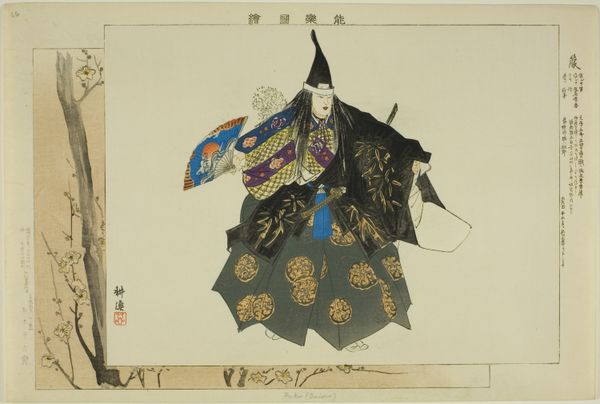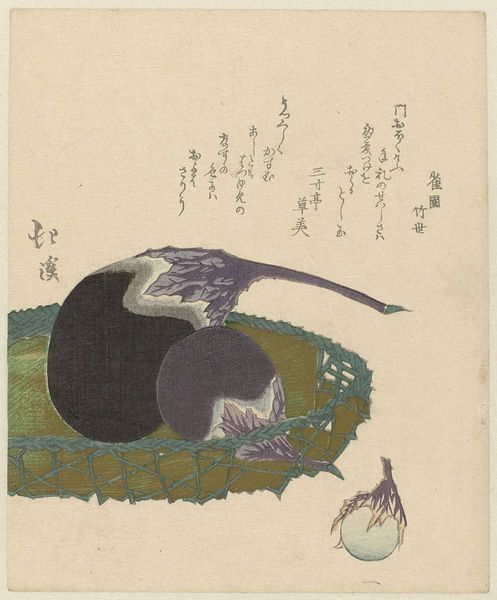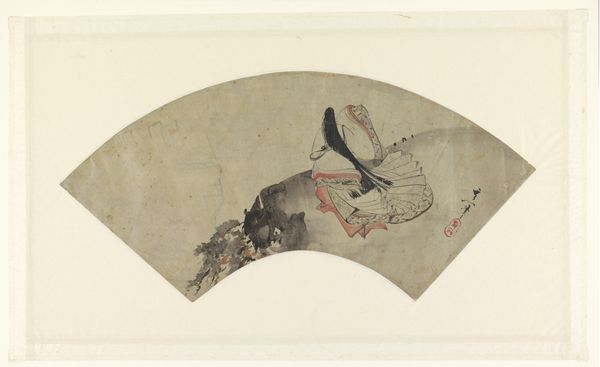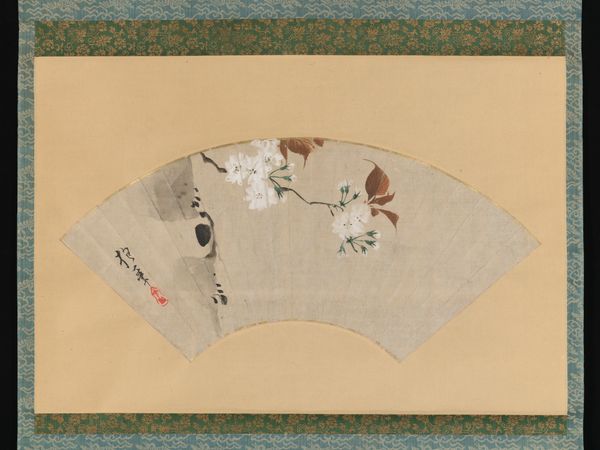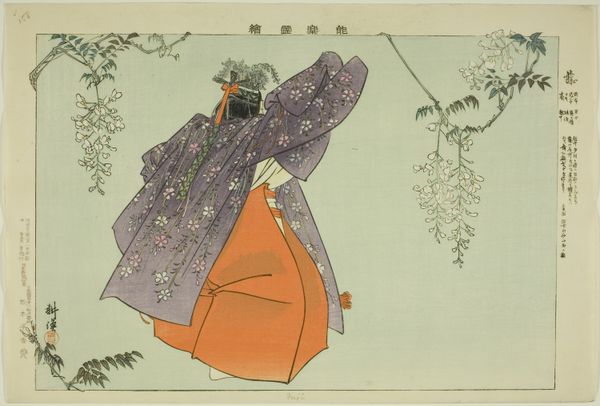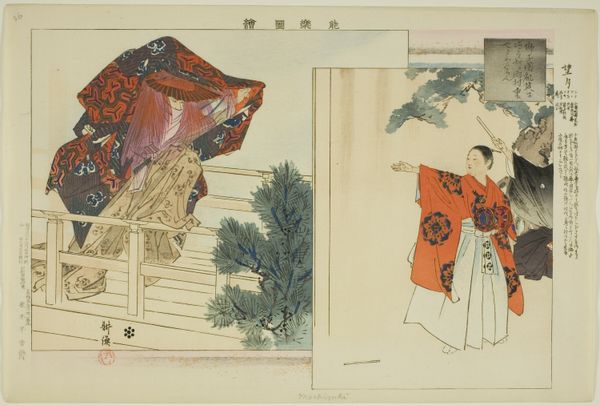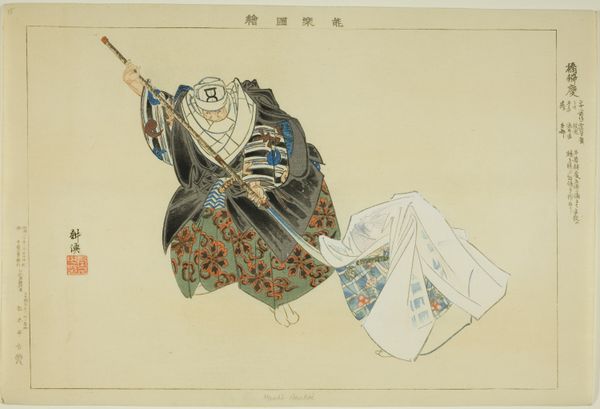
Programma van de 'Matinée Théatrale' georganiseerd door de Société franco-japonaise de Paris before 1908
0:00
0:00
anonymous
Rijksmuseum
Dimensions: height 208 mm, width 155 mm, width 460 mm
Copyright: Rijks Museum: Open Domain
Curator: Before us, we have a woodblock print from before 1908, titled "Programma van de 'Matinée Théatrale' georganiseerd door de Société franco-japonaise de Paris.” It’s held here at the Rijksmuseum. Editor: My immediate reaction is the subtle melancholia of it. The figure seems to almost...bow out of the scene, weighed down perhaps, by that striking floral kimono? It's so beautifully executed, and yet carries a feeling of transience. Curator: Absolutely, the weight isn't just emotional but also a consideration of material conditions. Prints like these were designed for mass consumption; theatrical programs accessible to a relatively broad audience due to the efficient nature of woodblock printing. Consider the labour and skill involved, yet presented in something easily distributed, easily discarded. Editor: And yet, surviving through time. The ghost of touch on every delicate curve. Speaking of which, the fabric depicted! What statements are being made through this luxurious garment that perhaps someone of lesser economic standing might have designed or printed? Does that tension amplify the melancholy? Curator: It definitely invites questions about cultural exchange and appropriation. This was made in a time of burgeoning Japonisme in France, and that Society clearly fostered creative dialogue but was it always balanced? The production and circulation of these prints were as much a part of that dialogue as the performance it advertised. Editor: It’s strange, to consider an object meant to herald an event; almost disposable in its purpose and nature. Here, preserved. I imagine theater patrons engaging and, momentarily later, crumpled inside a pocket or… worse. The intimacy with this print now feels forbidden. It makes me yearn to understand who touched it, so casually, long ago. Curator: Right, we romanticize 'high art', while these printed objects connect us more intimately to daily life. They illustrate the theater patron, the craftsman, the distributors, the wood itself...all intertwined within layers of production, society and value. A fragile matrix that belies its delicate appearance. Editor: Ultimately, what starts as fleeting—the ephemeral nature of the theatrical performance itself—becomes ironically fixed within this accessible yet intricate creation, and survives beyond the play's own narrative. So, really, what is discarded...what remains?
Comments
No comments
Be the first to comment and join the conversation on the ultimate creative platform.

